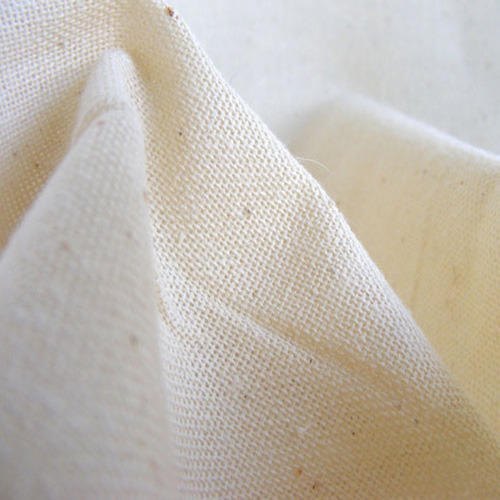
What is Greige Fabric?

In the domain of textiles, the expression "greige grey fabrics" could seem like a specialized language, yet it addresses a captivating class that overcomes any barrier among crude and completed fabrics. These unbleached and incomplete fabrics hold huge potential and flexibility, offering a material for different coloring and completing cycles. In this extensive aide, we dive into the universe of greige grey fabrics, investigating their attributes, applications, and the extraordinary excursion they attempt to turn into the materials we use and love.
Unveiling Greige Grey Fabrics
Greige grey fabrics, frequently alluded to as "dim merchandise," are materials in their most essential structure. They are woven or sewn from normal strands like cotton, material, or fleece, and they rise up out of the loom or weaving machine with their regular tone and surface unblemished. These fabrics are unbleached, untreated, and without any trace of any extra gets done or colors.
The expression "greige" is gotten from the blend of "dim" (alluding to the texture's normal tone) and "beige" (implying its undyed state). This nonpartisan variety fills in as a fresh start, prepared to retain different medicines and wraps up to accomplish the ideal tone, surface, and execution qualities.
Characteristics of Greige Grey Fabrics
1. Natural Aesthetics:
Greige gray fabrics exhibit a raw, rustic aesthetic, reflecting the inherent beauty of the natural fibers from which they are made. This untouched appearance appeals to those seeking an organic, raw feel.
2. Texture and Handfeel:
These fabrics retain the unique texture and feel of the underlying fibers. The tactile experience of off-white fabrics can range from soft and airy to robust and rough, depending on the fiber composition.
3. Versatility:
The neutral color of gray greige fabrics makes them incredibly versatile. They can be transformed through dyeing, printing and finishing techniques into a wide range of colors and patterns, catering to various design aesthetics.
4. Absorbent Nature:
Greige gray fabrics are inherently absorbent, making them suitable for applications where moisture management is essential, such as towels, bedding and clothing.
5. Sustainable Appeal:
As undyed and unfinished textiles, off-white fabrics align with sustainable and eco-friendly practices. Its minimal processing reduces the environmental impact associated with dyeing and finishing.
The Transformative Journey of Greige Grey Fabrics
The journey from greige grey fabric to the final textile product is a multifaceted process involving various treatments and techniques:
1. Preparation:
Greige gray fabrics undergo processes such as laundering and heat setting to remove any impurities, shrinkage, or tension resulting from the weaving or weaving process.
2. Dyeing:
Dyeing is a crucial step that imparts color to the fabric. Greige gray fabrics are dyed using a variety of methods, from traditional vat or reactive dyes to modern digital printing techniques.
3. Finishing:
Finishing treatments improve the performance and aesthetics of the fabric. These may include processes such as smoothing, starching, or coating to achieve specific textures, tactile sensations, or functionality.
4. Printing:
Greige gray fabrics can be embellished with intricate patterns and designs using various printing methods, including screen printing, block printing, and digital printing.
5. Application-Specific Treatments:
Depending on the intended use, off-white fabrics can undergo additional treatments, such as flame retardant coatings for upholstery fabrics or moisture-wicking finishes for sportswear.
Applications of Greige Grey Fabrics
Greige grey fabrics serve as a versatile foundation for a wide range of end products across industries:
1. Apparel:
From casual wear to high-end fashion, gray fabrics are the starting point for garments that run the gamut of styles.
2. Home Textiles:
Bed linens, towels, drapes and upholstery all benefit from the absorbent and customizable nature of off-white fabrics.
3. Industrial and Technical Textiles:
In industrial applications, gray fabrics are used for their durability and adaptability. They can be treated for specific functionalities, such as fire resistance or waterproofing.
4. Craft and Artisanal Products:
Greige gray fabrics find their way into the hands of artisans and artisans who appreciate their natural aesthetics and malleability to create unique handcrafted items.
5. Fashion Accessories:
Accessories such as bags, scarves and hats can be made from dyed fabrics and finished in raw grey, offering a balance between simplicity and sophistication.
Conclusion
Greige gray fabrics are the canvas on which the textile industry paints its myriad colors, patterns and textures. Its natural, untouched appeal resonates with both sustainable practices and creative expressions. From the neutral tones of its raw form to the vibrant hues of the finished product, gray greige fabrics go through a transformative journey that embodies the essence of textile craft.
Whether they adorn our bodies as fashion statements, enhance our living spaces as home textiles, or serve industrial needs with their durability, gray greige fabrics remain a quiet force behind the tapestry of modern living. Understanding their characteristics, applications, and transformative potential provides a deeper appreciation of the textiles that surround us and enrich our lives in a variety of ways.
 |
 |
BALAVIGNA WEAVING MILLS PVT. LTD.
All Rights Reserved.(Terms of Use) Developed and Managed by Infocom Network Private Limited. |



